Wetlands - Creating a Wetter and Wilder East
We are facing a water crisis here in the East.
Increased stresses from things like population growth and agriculture will need multi-sector collaboration if they're to be dealt with responsibly and sustainably.
In her first article for Wild East, Nancy Smith from Water Resources East says positive change is both needed and possible.
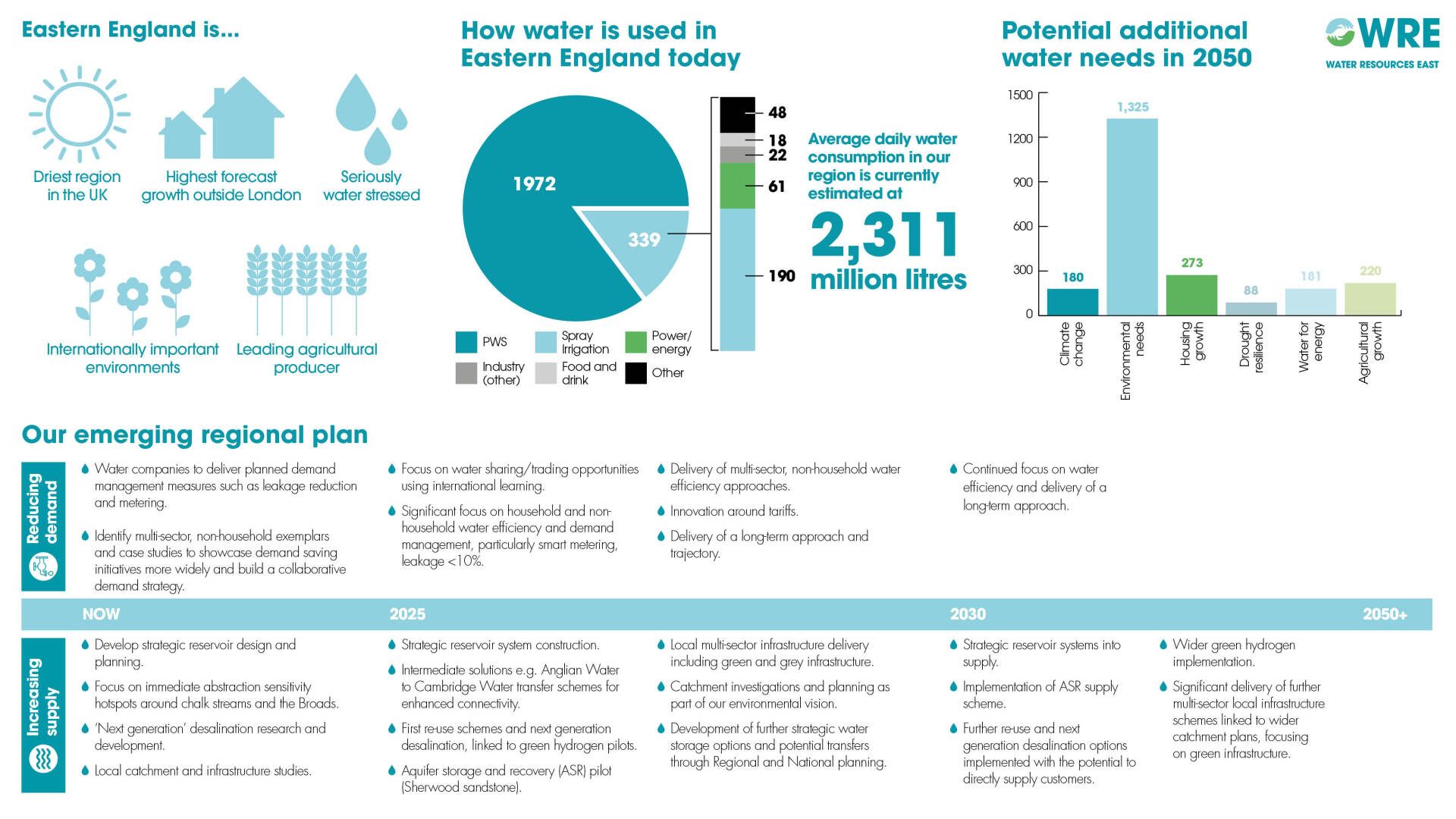
Can we have a region wide water plan for Eastern England? Yes. And Water Resources East has one.
WildEast and
Water Resources East (WRE) have a shared understanding of one fundamental reality: the Eastern region of the UK is facing a water crisis and it is short of water now. Nevertheless, WildEast and WRE have a shared vision for how we work collaboratively to attempt to fix this crisis and create a more sustainable and resilient future for nature and the people who rely on it (that’s everyone, by the way!).
The days of siloed thinking and working are over, collaboration is the way to success. Water Resources East, who are proud supporters of WildEast, operate as a non-profit regional planning group. Formed in 2014, WREs mission it to develop a more collaborative approach to water resource planning in a region under significant pressure due to population growth, economic ambition, and climate change impacts, with the need for enhanced environmental protection.
Eastern England is characterised by its internationally important habitats, and diversity of water use, including very significant non-public water supply users- particularly irrigated agriculture, food production, energy and conservation. Nearly 30% of the land is below sea level, a large proportion of the area of the East of England (75%) is used for agricultural production and it has one of the longest coastlines of any region.
Yet, it is the driest region in the UK and The Environment Agency has classified the whole of Eastern England as being in ‘serious water stress’.
So this month, WRE and their 180+ strong members launched a consultation of their Emerging Water Resources Regional Plan. We know what you may be thinking: ‘another plan, here we go!’ but, Regional Planning is backed by Defra and earmarked as innovative in its approach as it works across sectors on scale for the first time. This plan is a response to the Environment Agency’s National Framework for Water Resources - published in March 2020. The emerging regional plan has been co-created with WRE’s cross-sector members and stakeholders - sending a clear message that water is not an issue which can, or should be, solved by one group of water users alone.
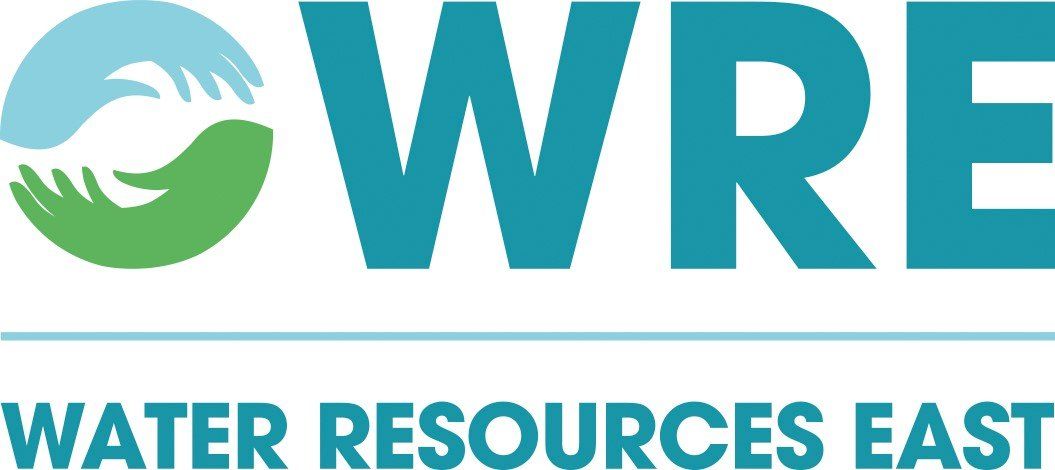
This is the first-ever multi-sector water resource management plan for the East of England, and it is the first stage of a two-year process that will culminate in a final plan being produced in autumn 2023. The emerging regional plan reveals that by 2050, the Eastern region could require up to double the amount of water currently used. This is from an increasing demand for public water supply and for the agri-food and the energy sectors - alongside an increasing water need for the natural environment and mitigating and adapting to the effects of climate change. By far the biggest driver influencing the plan is the need to leave water in the environment to restore, protect, and enhance the region’s sensitive water bodies. This includes precious chalk rivers and rewetting landscapes such as wetlands and peatlands that naturally act as a carbon sink, capturing millions of tons of carbon dioxide (CO2).
WildEast know a lot about how important a healthy environment is to everything else, and we turn to them for essential insights into the farming and the agricultural landscape, local knowledge, and connections. This is to embrace their pledge of returning 250,000 hectares of land to nature and to radically change how it is seen and, in turn, fulfil our environmental ambitions too.
To find out more about WRE’s emerging regional plan and to respond to the consultation, read below and visit www.wre.org.uk/projects/the-regional-plan/
The consultation is open until 28 February 2022. Responses will be used to develop the next iteration of our plan, due in autumn 2022.
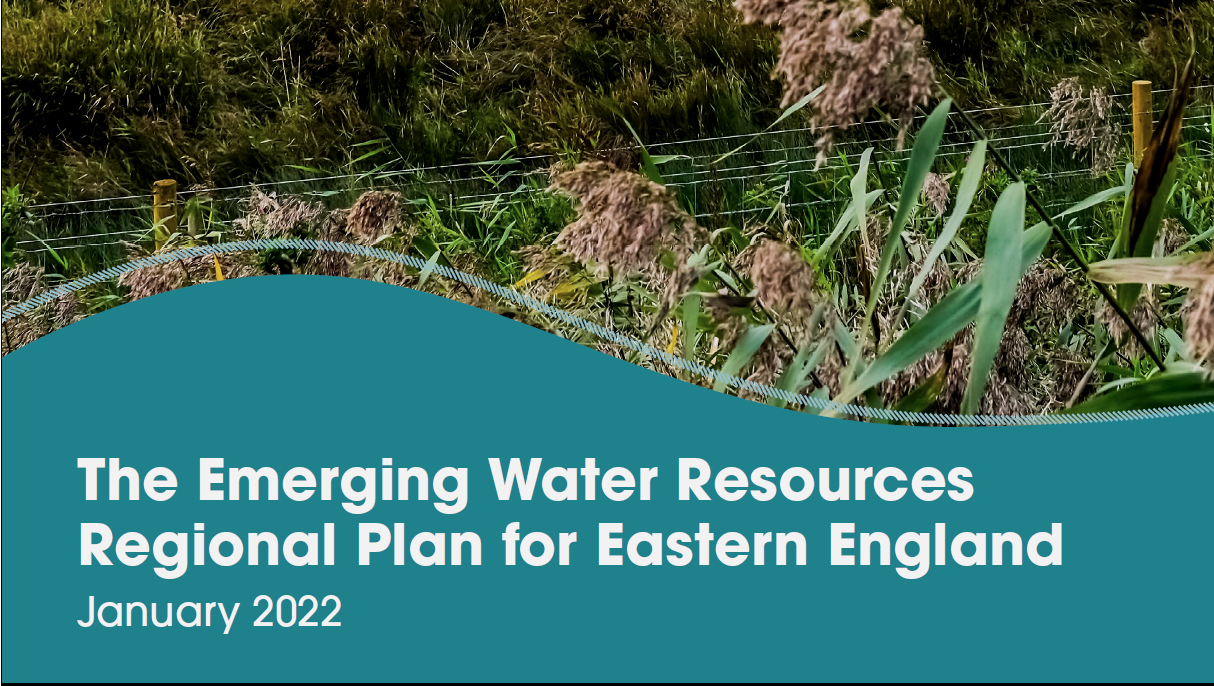
What does WRE Emerging Water Resources Regional Plan say?
WRE is a disruptor in the water planning world, and it is important to note that actions ‘on the ground’ will not be taken by us directly. It will be for other sectors to incorporate the issues and solutions identified within their planning processes. The WRE plan and process will provide a context and a means by which interested parties can have more confidence in making their choices. Our plan highlights several emerging supply side options and alternative water sources together with demand options to cut down on the water used. These will be needed at different time periods from now until 2050 to help meet our ambitions to save water and reduce overall demand from all sectors that need and use water.
All options that have been identified in collaboration with our members and stakeholders, including WildEast, and will continue to be explored to inform WRE’s draft regional plan which will be published for consultation in autumn 2022.
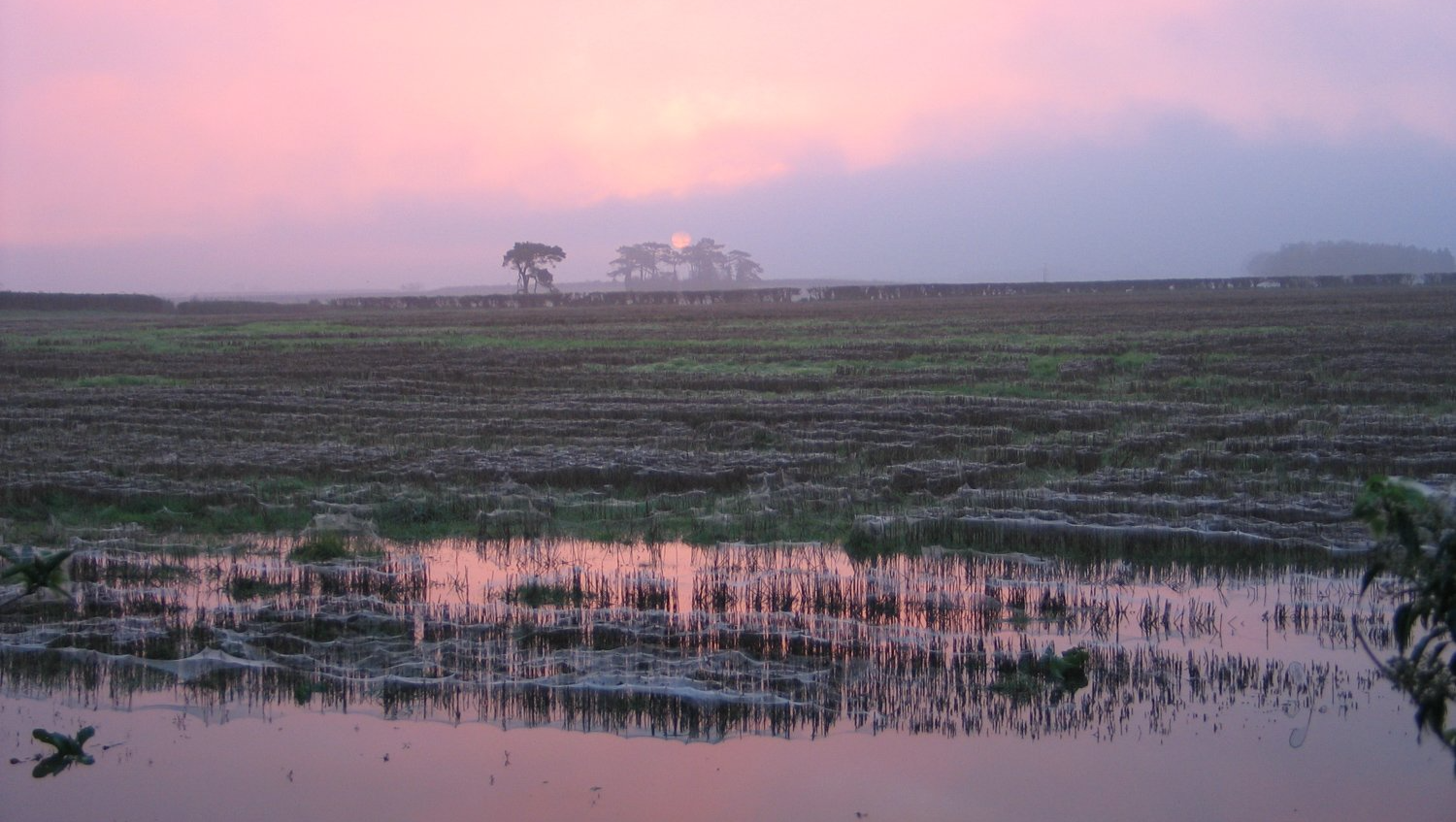
Some options identified in our emerging plan to help tackle the water crisis include:
- Additional funds by water companies to reduce leakage and help customers use water more efficiently.
- Exploring and piloting payment tariff reforms.
- Developing two, new, multi-sector reservoirs, aquifer storage and recovery, effluent re-use schemes, and next generation desalination using renewable energy.
- Finding local options such as storage reservoirs and open waterways that can also act as flood resilience while also providing tourism benefits.
Along-side researching, developing, and enacting these options, work on WRE’s flagship projects with members and partners will continue to explore the art of the possible and help inform the Final Water Resources Plan published in autumn 2023. Some of these projects include:
- The Norfolk Water Management Plan which is creating a long-term investable programme of nature-based solutions, delivered at scale, that can attract large scale funding to help address water security challenges.
- The Chalk Stream Restoration Project is reviewing approaches to improving the resilience of chalk stream catchments.
- Future Fens Integrated Adaptation is an integrated multi-benefit water management strategy in the Fens.
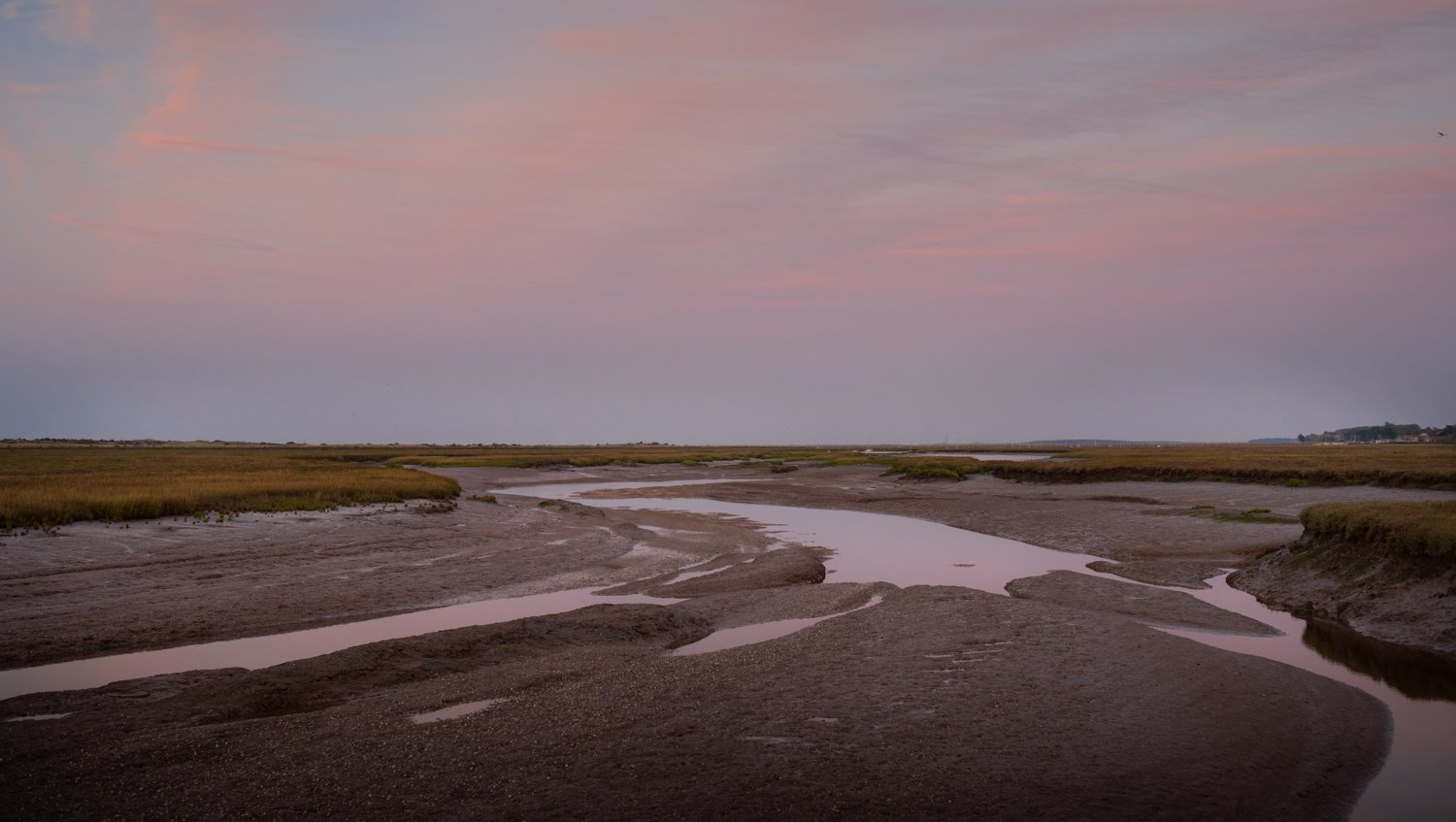
What’s in the emerging plan longer term?
Now to 2025
- Water company delivery (e.g. demand management such as per person consumption reduction (PCC) and leakage reduction from pipe work).
- Identification of multi-sector, non-household exemplars.
- Focus on immediate abstraction hotspots around chalk streams and the Broads.
- Strategic reservoir design and planning and local infrastructure studies.
- ‘Next generation’ renewable energy desalination research and development.
2025 to 2030
- Significant focus on household and non-household water efficiency and demand management, particularly smart metering, leakage reduction.
- Innovation around payment tariffs to be explored and piloted.
- Focus on water sharing/trading opportunities using international learning.
- Delivery of multi-sector, non-household water efficiency approaches.
- Strategic reservoir system construction. Intermediate solutions e.g. inter-water company transfers.
- Pilot re-use schemes and next generation desalination, linked to green hydrogen.
- Aquifer storage and recovery (ASR) pilot.
- Local multi-sector infrastructure delivery.
- Catchment investigations and planning (linked to WRE’s environmental vision).
- Development of further storage options and potential transfers through regional and national planning.
2030 onwards
- Continued focus on water efficiency and delivery of a long-term approach.
- Strategic reservoir systems bought into supply.
- Wider re-use and next generation desalination options, including for potential public water supply.
- Aquifer Storage and Recovery (ASR) implementation.
- Wider green hydrogen implementation.
- Significant delivery of further multi-sector local green and grey infrastructure linked to catchment plans.*
* Green infrastructure refers to natural systems including forests, floodplains, wetlands and soils that provide additional benefits for human well-being, such as flood protection and climate regulation. Grey infrastructure refers to structures such as dams, seawalls, roads, pipes or water treatment plants.
WildEast Blog

Powered by LocaliQ
Follow Us
SIGN UP FOR NEWS & UPDATES
Newsletter Sign Up
Thank you for signing up to our newsletter.
Please try again later.
Privacy / Terms & Conditions / Sitemap
